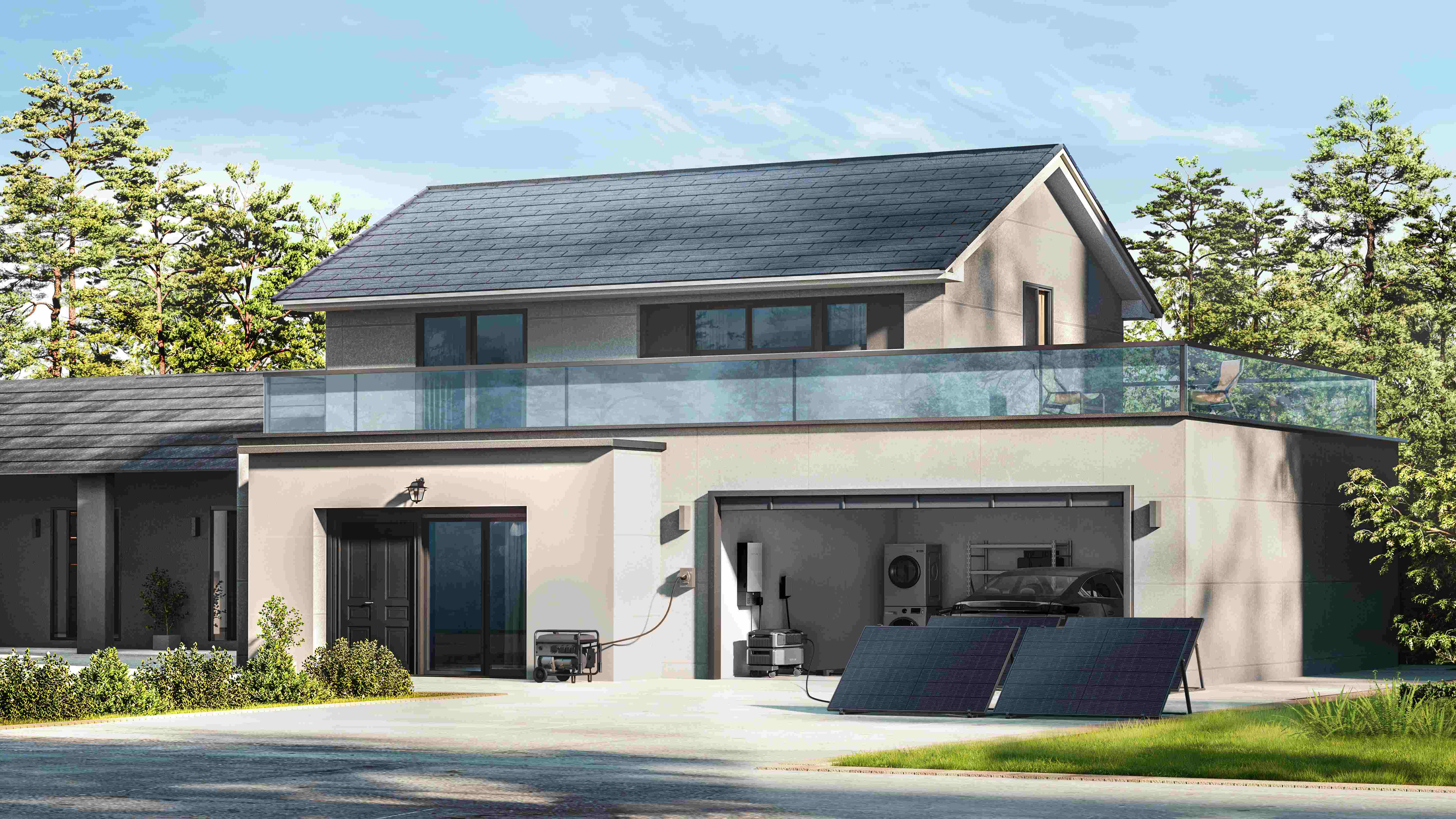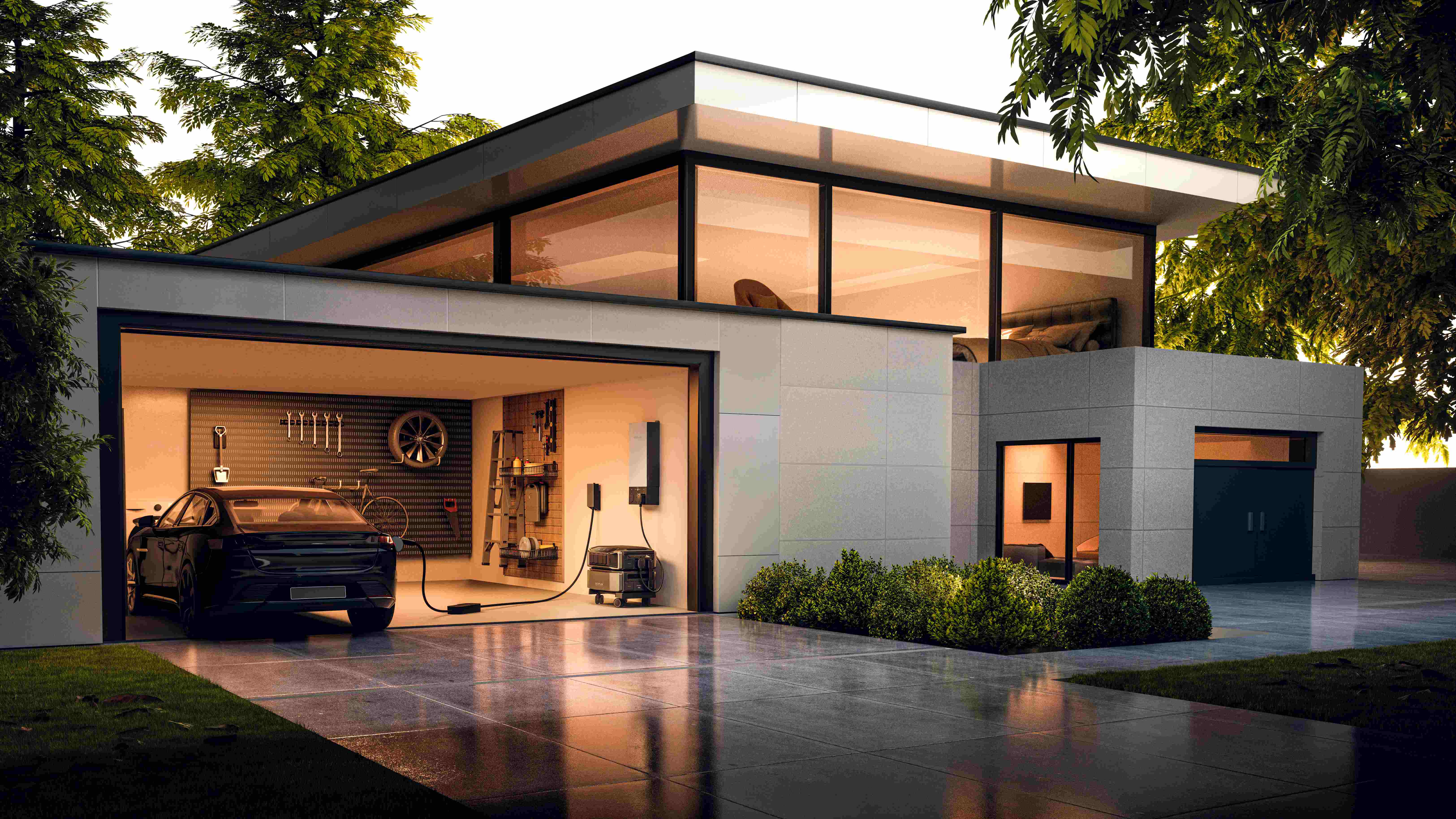How to Build a Perfectly Balanced Solar and Battery System for Your Home
- Why a Balanced Solar and Battery System is Crucial
- Step 1: Calculate Your Home's Energy Consumption
- Step 2: Correctly Size Your Solar Panels and Battery Storage
- Example Solar and Battery System Designs
- Step 3: Integrate Safety and Future-Proofing
- Frequently Asked Questions About Solar & Battery Systems
- Your Path to Clean Energy Independence Awaits
For energy independence, lower electricity bills, and a smaller carbon footprint, it's clear that using the sun's power is the way to go. A solar-only system used to be the norm, but it has a clear flaw: it can only work when the sun is out. Today's answer needs more than just solar panels; it needs solar and battery storage to work together perfectly. A properly balanced solar and battery system is the key to collecting and saving enough energy during the day to power your home at night, giving you real energy independence and dependability when the power goes out.
Why a Balanced Solar and Battery System is Crucial
The key to making a good home energy system is to make sure that the power output (your solar panels) and energy storage (your battery bank) work together perfectly. When these two parts are out of balance, it can cause a lot of wasted time and money, as well as anger. In order for solar and batteries to work together, they need to be the right size and shape.
Energy Clipping and Wasted Potential
A problem known as "clipping" can happen if your solar array is too big for your battery's capacity or charge speed. The extra solar energy your panels make has nowhere to go once the battery is full. This power is either lost completely or sold back to the grid for very little money, so your panel purchase doesn't make you very much money. You paid a lot of money for solar panels that you can't really use.
Undersized and Overworked System
A big battery matched with a small solar array, on the other hand, will always have trouble getting fully charged, especially when the days are shorter or it's cloudy. This not only leaves you without enough power when you need it most, but it can also put stress on the battery, which could make it last less long. A balanced system makes sure that all of its parts work well together, so you can use as much solar power as possible and get your money back faster.
Step 1: Calculate Your Home's Energy Consumption
You need to know exactly how much energy you use before you can plan your system. This is the most important step. If you guess here, you might end up with an expensive system that doesn't work the way you want it to. A thorough home energy audit is the basis for all the calculations that come after.
Perform an Energy Audit
The simplest method is to review your past 12 months of electricity bills. Looking at a full year is essential as it captures seasonal variations, such as higher air conditioning use in the summer or increased lighting and heating in the winter. Identify your highest consumption month; this figure is useful for planning a system that can handle your peak demand.
Find Your Daily kWh Average
Add up your total kilowatt-hour (kWh) usage for the entire year and divide by 365. This number is your average daily energy consumption. For example, if you used 10,950 kWh over a year, your daily average is 30 kWh. For a more advanced and real-time analysis, you could also use a home energy monitor that clamps onto your electrical panel to track precise usage patterns throughout the day.
Step 2: Correctly Size Your Solar Panels and Battery Storage
With your daily energy target, you can now size the core components of your solar and battery storage system.
Size Your Solar Panel Array
The goal is to install enough solar capacity (measured in kilowatts, or kW) to meet your daily needs and fully charge your battery. You can estimate this by dividing your average daily kWh usage by your area's "peak sun hours"—the daily average of intense sunlight. This figure varies significantly by location; Arizona may get 6-7 hours, while a state in the Northeast might only get 4-5. If your home uses 30 kWh per day and gets 5 peak sun hours, you need a 6 kW solar array (30 kWh / 5 hours = 6 kW). Remember to also factor in panel efficiency, which degrades slightly over time, and potential shading.
3 Key Specs of Battery Sizing
Sizing your battery involves more than just its capacity.
Capacity (kWh): This is the total amount of energy the battery can store. To get one full day of backup, your battery's usable capacity must match your daily kWh average.
Depth of Discharge (DoD): This is the usable percentage of its total capacity. A 10 kWh battery with a 90% DoD provides 9 kWh of usable energy. Most modern lithium-based batteries, like LiFePO4 (Lithium Iron Phosphate), have a high DoD of 90-100%.
Power Rating (kW): This is how much electricity the battery can deliver at one time. A 10 kWh battery might have a 5 kW power rating, meaning it can run appliances that draw up to 5,000 watts simultaneously. A large capacity is useless if the power rating is too low to start your air conditioner. This is a feature where high-output systems like the Delta Pro Ultra X excel, capable of running even a 5-ton air conditioner.
Example Solar and Battery System Designs
Every household has different goals. Here are three common blueprints fleshed out with more detail.
The Budget-Conscious Starter System
This setup is for homeowners focused on reducing utility bills through "load shifting" by using stored solar power during expensive peak evening hours. It might feature a 3-4 kW solar array and a 5-7 kWh battery. This system could comfortably run your lights, television, and internet router for several hours in the evening but likely wouldn't be sufficient for large appliances like an HVAC system.
The Renter's Portable Power Hub
Renters can achieve energy freedom with a high-capacity portable power station, expandable batteries, and portable solar panels. A setup with 2-4 kWh of storage could power a home office (laptop, monitor, internet), charge phones, and run a small refrigerator for most of the day, making it a viable and flexible solar and battery solution.
The Family's Energy Fortress
For homeowners seeking robust backup power, a larger system is needed. An 8-12 kW solar array paired with 15-20 kWh or more of battery storage from a powerful unit like the Delta Pro Ultra X can provide true energy security. This configuration could power essential loads like a refrigerator, freezer, internet modem, select lights, and a well pump for multiple days during a grid outage, ensuring your family's safety and comfort.


Step 3: Integrate Safety and Future-Proofing
A well-designed system is both safe and scalable. These considerations are critical during the planning phase.
Essential Safety Foundations and Professional Installation
Safety is non-negotiable. Due to the high voltages and complexity involved, a professional installation is strongly recommended. Installers will ensure your system complies with the National Electrical Code (NEC) and local permits. This includes using proper PV-rated wiring in a protective conduit, correctly grounding the entire system, and placing batteries in a location with adequate ventilation and temperature control to maximize their lifespan.
Plan for Future Energy Needs
Your energy needs will likely grow. Choosing a hybrid inverter from the start is a wise investment. These inverters are designed to seamlessly manage power from the solar panels, battery, and grid all at once and can often accommodate system expansion. Furthermore, consider battery chemistry. LiFePO4 batteries, for example, offer a longer lifespan and superior thermal safety compared to other lithium-ion types, making them an excellent choice for a long-term home investment.


Frequently Asked Questions About Solar & Battery Systems
Q1: How Many Solar Panels and Batteries Do I Need to Run My House?
It depends entirely on your daily kWh usage and desired backup time. Start by calculating your daily average using your utility bill, then use the formulas in this guide to estimate your panel and battery size. A professional installer can provide a precise calculation based on your home's specifics.
Q2: Can a Solar and Battery System Power My Home During an Outage?
Yes, that is a primary benefit. A correctly sized system with a hybrid inverter or automatic transfer switch can seamlessly take over during a grid failure, providing backup power to your essential appliances.
Q3: Can I Add a Battery to My Existing Solar Panel System?
Yes, this is called a "retrofit." You can add a battery to an existing grid-tied solar system using a method called AC coupling, which involves a separate battery-specific inverter.
Q4: Should I prioritize running "critical loads" or my entire home during an outage?
For optimal balance and run-time, you should prioritize critical loads (lights, fridge, Wi-Fi). Powering the entire home requires a much larger, more expensive battery system. Focusing on critical loads ensures your essential items stay running for a longer duration.
Your Path to Clean Energy Independence Awaits
In the end, making the best solar and battery systems means matching technology to your energy needs and way of life. You can build a reliable source of clean energy by carefully figuring out how much energy you need, making sure that both the production and storage parts are the right size, and planning for a safe and scalable future. This combination lets you be truly energy independent, which gives your house long-term financial value, security, and peace of mind.